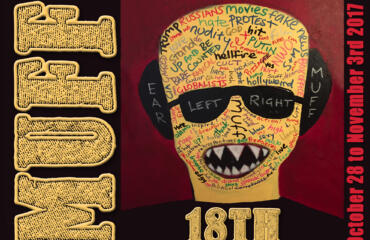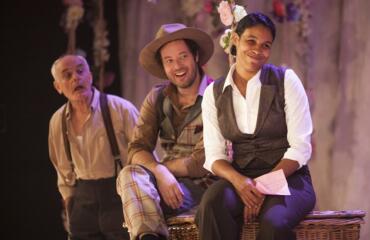The app, an initiative of the national charity All Together Now, leads users through various scenarios in which children could be excluded because of bias and stereotyping.
It follows the successful launch two years ago of similar technology aimed at adults, called the Everyday Racism app, which drew international acclaim.
Ultimately, it is hoped the new prototype will be trialed formally on as many as 400 children across schools in NSW and Victoria.
“When children use explicit forms of bias, even at 9 and 10 years of age, they are often not fully aware of what it entails or the harm that it causes others. Social exclusion based on gender, race, ethnicity and culture emerges during childhood.” — Professor Melanie Killen, University of Maryland
The app’s project manager, Kiriaki Koubaroulis, said the developers had received numerous requests from teachers following the success of the adult app, asking if something similar could “help promote positive peer relationships among children and provide teachers better tools to deal with racism.”
Australian schools cater to a widely diverse student population. One-in-three Australian school children are either immigrants themselves or born in Australia to at least one immigrant parent.
But schools can be a breeding ground for racism, with studies suggesting around one-in-five school students in Australia experience racism every day.
Researchers behind the new app, including US academics, recognised that the years 8-10 were crucial in child development regarding various forms of bias, as well as racial attitudes.
Professor Melanie Killen, of the Department of Human Development and Quantitative Methodology at the University of Maryland, said children at this age were just beginning to make distinctions between the “in group” and the “out group”, as well as making other types of judgments that can lead to explicit stereotyping and biases.

“It is very important to intervene in childhood because by adulthood prejudicial attitudes are deeply entrenched and hard to change,” she told The Citizen.
Studies have shown that children as young as six or seven can develop implicit forms of racial bias.
“Children are often unaware that they hold these biases,” Professor Killen added. “Some forms of explicit bias emerge as well by 9 and 10 years of age. When children use explicit forms of bias, even at 9 and 10 years of age, they are often not fully aware of what it entails or the harm that it causes others. Social exclusion based on gender, race, ethnicity and culture emerges during childhood.”
Research showed “that when children interact with peers from different cultural and ethnic groups, and have the opportunity to form friendships, then their biases are reduced.”

The new app guides children through eight weekly, 30-minute sessions in which they spend 10 minutes working through different scenarios on a tablet prior to a 20-minute discussion.
The program features everyday examples of social exclusion in which a child is excluded from a group based on ethnicity, race or gender.
“For example, a girl of Sudanese heritage is potentially excluded because the other girls believe she would be too shy to join them at a fun park because of her cultural heritage,” said Ms Koubaroulis. “I say potentially because, within the app, the players will have to make a decision to exclude or include the character on the receiving end of the act of racial bias.

“We are trying to encourage empathy in the players by asking them what they would do in each scenario. Depending on their choice, the scene plays out differently.”
For now, teachers interested in using the app in their classrooms can do so by approaching All Together Now. Plans for the more formal trial next year are dependent on funding, at which point teacher training would likely be included.
While the app initially will be confined to schools, the developers fully expect its introduction to prompt discussions in the home. “But our community reference group involves parents and teachers and we will incorporate the feedback received from the initial trials,” said Ms Koubaroulis.
Children are particularly vulnerable to the harmful effects of racism, the most common forms being when they are told they don’t belong or are called names and teased, are left out by the teacher or other students, or physically abused (spat on, pushed or hit).

The need for the intervention was further underscored by a recent study of NSW teachers’ understanding of racism, which demonstrated that only half of classroom teachers had received professional training about incorporating anti-racism strategies into their lessons, with one-in-five having had no training in the area of multiculturalism. Of the teachers surveyed, just over half agreed that racism was a problem in schools.
“These were quite concerning findings for us and was a key factor behind the development of the children’s app,” said Priscilla Brice, the managing director of All Together Now.
The charity, which was established six years ago, has been running numerous projects that tackle racism in Australia, including initiatives such as the CAPE-Community Action for Preventing Extremism, which targets white extremists. Others include ONE, which focuses on racism in Parramatta, NSW, and Erase Racism, a collaboration with A-League soccer.
Its Everyday Racism App, which brought together Melbourne, Deakin and Western Sydney universities, was launched two years ago and won two international prizes. It has been downloaded more than 25,000 times, with the developers now working on an updated version.
“When we won the Intercultural Innovation Award and the Peace App prize, we wanted to utilise the prize money by taking [the app] to an international audience, but we realised that it would be difficult as the scenarios were specifically tailored to the Australian population,” said Ms Brice.
“The children’s app seemed to be a good follow-on. Because it’s a web-based app, it would be far easier to share it internationally and, being a children’s app, the scenarios can be easily adapted to different countries and cultures.”
“We are trying to encourage empathy in the players by asking them what they would do in each scenario. Depending on their choice, the scene plays out differently.” — Kiriaki Koubaroulis, the children’s app project manager
Deakin University’s Professor Yin Paradies, a member of the scientific advisory team for the Everyday Racism app, said that after playing the game, three in four users reported increased awareness of racist talk and actions, while nine out of 10 said the app was effective in encouraging bystander action. Three in five users had since spoken up against racism, while almost all reported that they believed action against racism was important.
“Awareness of racism is high in Australia — 80-85 per cent, but what people consider racism varies considerably and more qualitative research is required to elucidate these varied understandings,” he added.
Professor Paradies, who has conducted many studies on racism in Australia, was part of a team that surveyed staff and students in Victorian schools between 2009 and 2013.
The survey showed that most staff rarely experienced direct racism but sometimes experienced vicarious racism (targeted at other staff or students). Although a majority of the staff agreed that their school was characterised by a culture of fairness or anti-racism, more than a third of students reported direct experiences of racism at school and more than one in five experienced at least one form of direct racism every day. Nearly half of those students born in non-English speaking countries experienced at least one form of direct racism once a month, while almost one in four reported experiencing at least one form of direct racism every day.
The survey also found that primary school students were more likely to experience direct racism than secondary school students.
“The children’s app seemed to be a good follow-on [from the Everyday Racism app]. Because it’s a web-based app, it would be far easier to share it internationally and, being a children’s app, the scenarios can be easily adapted to different countries and cultures.” — Priscilla Brice, All Together Now
Both Victoria and NSW offer a range of professional training and curriculum resources aimed at tackling racism and promoting inclusive behaviour in schools.
Although the education departments of both states are not involved directly with the children’s app trial, they are happy for schools to be involved.
A world first, according to its developers, the app is a long-term project and will evolve based on feedback from successive trials. Project manager Ms Koubaroulis said: “Once it is ready, we will look at engaging consultants to design curriculum and supplementary materials to facilitate the use of the app within a program of learning in the classroom.”
Ms Brice added that the pioneers’ ultimate aim was to take the app to all schools across Australia and internationally.
“We want to help the teachers understand racism and feel comfortable talking about racism in schools. So if any student says something racist in class, they know how to respond to it.”
► A version of this story also appears in The Age.


